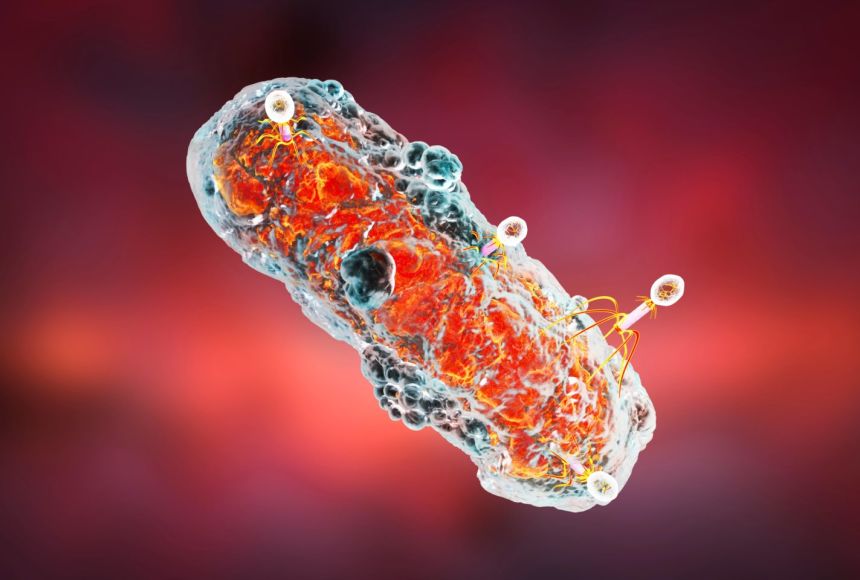ENCYCLOPEDIC ENTRY
ENCYCLOPEDIC ENTRY
Receptor Sites
Receptor Sites
Receptor sites are proteins typically found on the surface of cells, which are able to recognize and bond to specific messenger molecules.
Grades
5 - 8
Subjects
Biology
Image
Bacteriophages and Bacteria
Like all cells, bacteria have receptor sites on the surface of their cell, which allow them to bond with molecules and receive signals from outside cells. Sometimes, receptor sites are utilized by viruses, like these bacteriophages, to infect and harm it.
Photograph by KATERYNA KON / SCIENCE PHOTO LIBRARY

Media Credits
The audio, illustrations, photos, and videos are credited beneath the media asset, except for promotional images, which generally link to another page that contains the media credit. The Rights Holder for media is the person or group credited.
Director
Author
Production Managers
Program Specialists
other
Last Updated
November 18, 2024
For information on user permissions, please read our Terms of Service. If you have questions about how to cite anything on our website in your project or classroom presentation, please contact your teacher. They will best know the preferred format. When you reach out to them, you will need the page title, URL, and the date you accessed the resource.
Media
If a media asset is downloadable, a download button appears in the corner of the media viewer. If no button appears, you cannot download or save the media.
Text
Text on this page is printable and can be used according to our Terms of Service.
Interactives
Any interactives on this page can only be played while you are visiting our website. You cannot download interactives.